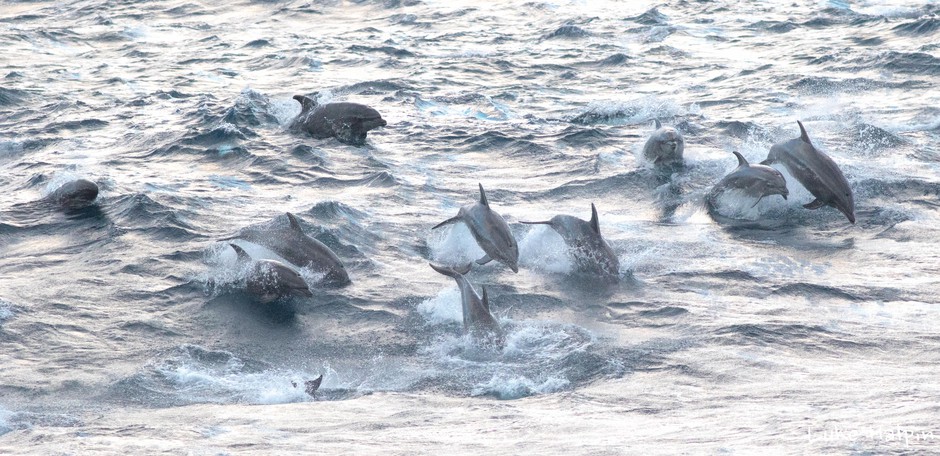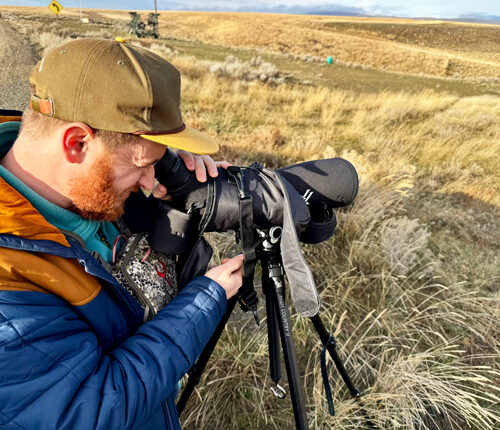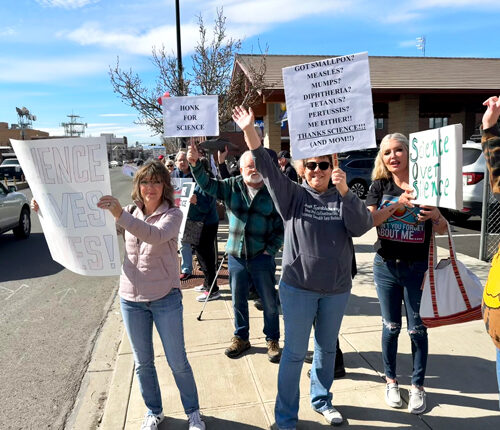
Tropical Dolphins Are Appearing In Pacific Northwest Waters
BY ERIN ROSS
While searching for seabirds in July of 2017, biologist Luke Halpin instead saw a sea bubbling with about 200 bottlenose dolphins and 70 false killer whales. It would be an unusual sight anywhere — bottlenose generally travel in much smaller groups — but Halpin’s sighting was made more remarkable by where it happened. These usually tropical animals were off the west coast of Canada.
Halpin, whose research was conducted in conjunction with the Canadian Department of Fisheries and Oceans, believes it’s the northernmost sighting of bottlenose dolphins on record and the largest recorded gathering of false killer whales in Pacific Canadian waters. The encounter was described in a paper published Thursday in the journal Marine Biodiversity records.
Halpin’s dolphins aren’t the only ones to make the journey north in recent years: A handful of bottlenose dolphins have been hanging around Puget Sound since September, and sightings of long-beaked common dolphins also have been increasing in the sound, according to Dave Anderson, a biologist with the Cascadia Research Collective.
There are two primary populations of bottlenose dolphins along the West Coast: the California coastal population and an offshore population. The large pod Halpin spotted was likely part of the offshore population, said co-author John Ford, a biologist with the Canadian Department of Fisheries and Oceans.
The waters of Oregon and Washington are regularly surveyed for offshore bottlenose dolphins, but they are rarely, if ever, seen past northern California, said Jay Barlow, who was not involved in the study. Barlow is a marine biologist and the senior scientist at NOAA who conducts the surveys. He said the bottlenose dolphins living in Puget Sound, which are confirmed to be from California’s coastal population, rarely venture farther north than San Francisco. The few that do make it north are usually sickly and frequently strand. But these dolphins all appear healthy.
“At first, I thought they had to be on the East Coast [of the United States], because it’s so unusual and I hadn’t heard of it already,” Barlow said.
But as exciting as the bottlenose sightings are, he’s more surprised by the false killer whales that came with them. “They’re even more tropical than the bottlenose are, and don’t go farther north than Southern California. They’ve been seen in British Columbia before, which probably is why they didn’t get the headline, but only a few and not since the ‘80s.”
Although the Canadian and Puget Sound sightings may not be related, Barlow thinks we may see more bottlenose dolphins in Northwest waters as the oceans continue to warm. “Global warming is real, and we haven’t really begun to see the impact of it. We expect to see shifts in distribution to bottlenose dolphin populations,” Barlow said. In other parts of the world, bottlenose dolphins are sometimes found in colder waters, which means they’re adaptable, Barlow said.
Still, he noted that traveling from California all the way to Canada is a pretty big jump.
“It’d take suitable conditions all the way north, or really poor conditions where they normally are, to cause them to go walkabout,” Barlow trailed off. “It’s a mystery. I think mysteries are good.”
Copyright 2018 Earthfix
Related Stories:

Canadian leaders hope trade negotiations won’t derail Columbia River Treaty
A view of the Columbia River in British Columbia. The Columbia River Treaty is on “pause” while the Trump administration considers its policy options. However, recent comments by President Donald

Searching for sage grouse: Looking for a chicken-sized needle in south-central WA
Seth Hulett, Audubon Washington’s senior program manager of the Columbia Plateau, searches through his spotting scope for sage grouse. (Credit: Courtney Flatt / NWPB) Listen (Runtime 4:12) Read In south-central

Dozens in Yakima rally to support science for national protest
Around 50 people gathered for Yakima’s Stand Up for Science rally on Friday. People around the country attended science protests at the same time. (Credit: Courtney Flatt / NWPB) Listen















